 Terrance Dicks, script editor of Doctor Who from 1968-1974, and writer of many episodes of the show both during and after that time, dies at the age of 84. He first took on Doctor Who script editing duties during the Patrick Troughton years under producer Derrick Sherwin, culminating in taking over as co-writer of an epic ten-part finale for the second Doctor, The War Games, when two other planned scripts fell through on very short notice. In incoming producer Barry Letts and frequent writer Malcolm Hulke, Dicks found a kindred spirits keen to introduce real-world issues into Doctor Who’s storytelling, resulting in what many fans of the original series regard as a golden age for the series. During the break between the 1973 and 1974 seasons, Dicks and Letts collaborated on an original science fiction series, Moonbase 3, which lasted a single season. When Tom Baker took over from Jon Pertwee, Dicks was succeeded by his protege (and frequent Doctor Who writer) Robert Holmes as the script editor, and then wrote numerous stories of his own, including Baker’s debut story, Robot, The Brain Of Morbius, The Horror Of Fang Rock, State Of Decay, and The Five Doctors. After Doctor Who ceased to exist as an active BBC production in the 1990s, Dicks contributed scripts to numerous commercial (but largely fan-made) direct-to-video productions, such as Shakedown, Mindgame, and Mindgame Trilogy. He also wrote for Space: 1999, Big Finish Productions, and the vast majority of Target Books’ voluminous output of Doctor Who novelizations in the 1970s and ’80s, based upon both his own scripts and those of other scriptwriters, which may ironically be the work for which he is ultimately best known.
Terrance Dicks, script editor of Doctor Who from 1968-1974, and writer of many episodes of the show both during and after that time, dies at the age of 84. He first took on Doctor Who script editing duties during the Patrick Troughton years under producer Derrick Sherwin, culminating in taking over as co-writer of an epic ten-part finale for the second Doctor, The War Games, when two other planned scripts fell through on very short notice. In incoming producer Barry Letts and frequent writer Malcolm Hulke, Dicks found a kindred spirits keen to introduce real-world issues into Doctor Who’s storytelling, resulting in what many fans of the original series regard as a golden age for the series. During the break between the 1973 and 1974 seasons, Dicks and Letts collaborated on an original science fiction series, Moonbase 3, which lasted a single season. When Tom Baker took over from Jon Pertwee, Dicks was succeeded by his protege (and frequent Doctor Who writer) Robert Holmes as the script editor, and then wrote numerous stories of his own, including Baker’s debut story, Robot, The Brain Of Morbius, The Horror Of Fang Rock, State Of Decay, and The Five Doctors. After Doctor Who ceased to exist as an active BBC production in the 1990s, Dicks contributed scripts to numerous commercial (but largely fan-made) direct-to-video productions, such as Shakedown, Mindgame, and Mindgame Trilogy. He also wrote for Space: 1999, Big Finish Productions, and the vast majority of Target Books’ voluminous output of Doctor Who novelizations in the 1970s and ’80s, based upon both his own scripts and those of other scriptwriters, which may ironically be the work for which he is ultimately best known.
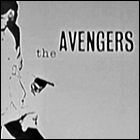 The 22nd episode of Sydney Newman’s spy series The Avengers, starring Ian Hendry and Patrick Macnee, airs on UK broadcaster ABC. This episode is now missing from the archives, but will be recreated in audio form in the 21st century by Big Finish Productions.
The 22nd episode of Sydney Newman’s spy series The Avengers, starring Ian Hendry and Patrick Macnee, airs on UK broadcaster ABC. This episode is now missing from the archives, but will be recreated in audio form in the 21st century by Big Finish Productions.
 The BBC announces, for the first time in the show’s history, that Doctor Who will have a new Doctor, in the form of actor Patrick Troughton. There are hints that the new Doctor will have a “new personality” and be “tougher,” though this concept is not elaborated upon any further. (Indeed, the BBC remains tight-lipped on how two actors with such different appearances could play the same part.) Studio taping of the swan song story for the first Doctor, William Hartnell, begins mere days later.
The BBC announces, for the first time in the show’s history, that Doctor Who will have a new Doctor, in the form of actor Patrick Troughton. There are hints that the new Doctor will have a “new personality” and be “tougher,” though this concept is not elaborated upon any further. (Indeed, the BBC remains tight-lipped on how two actors with such different appearances could play the same part.) Studio taping of the swan song story for the first Doctor, William Hartnell, begins mere days later. 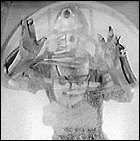 The
The 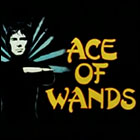 ITV airs the sixth episode of Ace Of Wands, starring Michael McKenzie, Tony Selby and Judy Loe. Vernon Dobtcheff guest stars. This episode, like the rest of the series’ first two seasons, is now missing from the archives.
ITV airs the sixth episode of Ace Of Wands, starring Michael McKenzie, Tony Selby and Judy Loe. Vernon Dobtcheff guest stars. This episode, like the rest of the series’ first two seasons, is now missing from the archives.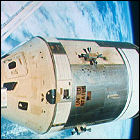 After the Congressional budget for the fiscal year of
After the Congressional budget for the fiscal year of 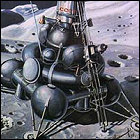 The Soviet Union launches unmanned space probe Luna 18 toward the moon, intended to repeat Luna 16’s feat of gathering and returning a sample of lunar soil to Earth. After spending nearly a week in orbit, Luna 18 descends to the surface, but ground controllers have directed it toward a hazardous mountain region, and contact is lost at the moment the vehicle signals contact with the ground – very likely a sign of a crash landing. No further communication is received from Luna 18, nor is the sample container ever sent back to Earth.
The Soviet Union launches unmanned space probe Luna 18 toward the moon, intended to repeat Luna 16’s feat of gathering and returning a sample of lunar soil to Earth. After spending nearly a week in orbit, Luna 18 descends to the surface, but ground controllers have directed it toward a hazardous mountain region, and contact is lost at the moment the vehicle signals contact with the ground – very likely a sign of a crash landing. No further communication is received from Luna 18, nor is the sample container ever sent back to Earth. The
The 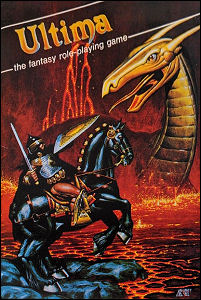 California Pacific Computer releases the computer role playing game game
California Pacific Computer releases the computer role playing game game 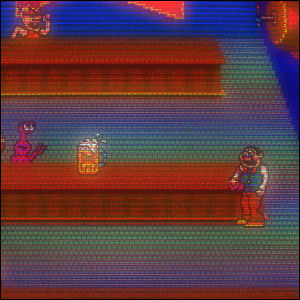
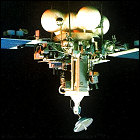 The Soviet Union loses contact with the Phobos 1 unmanned Mars probe during its interplanetary flight and is unable to re-establish contact. The cause of the vehicle’s loss is later traced to a typo in a single line of command code uplinked to its computer from the ground; this error changes a routine command to a command to shut down attitude control, leaving Phobos 1 tumbling through space, unable to point its antenna toward Earth. The mission is a complete loss.
The Soviet Union loses contact with the Phobos 1 unmanned Mars probe during its interplanetary flight and is unable to re-establish contact. The cause of the vehicle’s loss is later traced to a typo in a single line of command code uplinked to its computer from the ground; this error changes a routine command to a command to shut down attitude control, leaving Phobos 1 tumbling through space, unable to point its antenna toward Earth. The mission is a complete loss.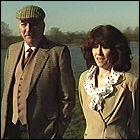 The Doctor Who-related fan production
The Doctor Who-related fan production 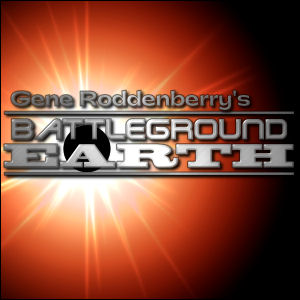 Broadcasting & Cable Weekly Magazine reveals that Majel Barrett Roddenberry and Tribune Entertainment have sealed a deal to produce a series first outlined by the late Star Trek creator Gene Roddenberry in the 1970s, Battleground Earth. Budgeted at $1,000,000 per episode, the series will be based on a series pitch that nearly resulted in a pilot for 20th Century Fox in 1977, until Roddenberry’s attention was refocused on the impending TV revival of Star Trek for the never-launched Paramount Television Service, which then became Star Trek: The Motion Picture. Then in the 1980s, Kenneth Johnson’s V, following a very similar story outline, became a hit, leaving Battleground Earth unusable for a time. This series will premiere in syndication in late 1997 under the title Gene Roddenberry’s Earth: Final Conflict.
Broadcasting & Cable Weekly Magazine reveals that Majel Barrett Roddenberry and Tribune Entertainment have sealed a deal to produce a series first outlined by the late Star Trek creator Gene Roddenberry in the 1970s, Battleground Earth. Budgeted at $1,000,000 per episode, the series will be based on a series pitch that nearly resulted in a pilot for 20th Century Fox in 1977, until Roddenberry’s attention was refocused on the impending TV revival of Star Trek for the never-launched Paramount Television Service, which then became Star Trek: The Motion Picture. Then in the 1980s, Kenneth Johnson’s V, following a very similar story outline, became a hit, leaving Battleground Earth unusable for a time. This series will premiere in syndication in late 1997 under the title Gene Roddenberry’s Earth: Final Conflict. Kid Rhino releases
Kid Rhino releases  Japanese label Noise McCartney Records releases the album
Japanese label Noise McCartney Records releases the album  BBC subsidiary AudioGo
BBC subsidiary AudioGo  American pay cable channel Starz airs the
American pay cable channel Starz airs the  Big Finish Productions releases the
Big Finish Productions releases the  Terrance Dicks, script editor of
Terrance Dicks, script editor of  The Federal Aviation Administration grounds the Virgin Galactic fleet following irregularities in the
The Federal Aviation Administration grounds the Virgin Galactic fleet following irregularities in the 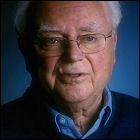 Astronomer Dr. Frank Drake, one of the founders of SETI (the Search for Extra-Terrestrial Intelligences), dies at the age of 92. His fascinating with searching for life on other worlds began at a young age, and defined much of his life and career. In the 1960s, as part of a lecture, he devised the Drake Equation, a formula for calculating a very rough estimate of the possible number of civilizations capable of communicating across interstellar distances; this equation has been debated and challenged over the years, as well as gaining mainstream recognition after being cited in popular science programming (such as Carl Sagan’s Cosmos) and science fiction as well. In the 1970s, Drake and Sagan joined forces to create the “messages in bottles” affixed to the earliest space probes expected to break free of the solar system, including the Pioneer plaques and the golden records attached to Voyagers 1 and 2.
Astronomer Dr. Frank Drake, one of the founders of SETI (the Search for Extra-Terrestrial Intelligences), dies at the age of 92. His fascinating with searching for life on other worlds began at a young age, and defined much of his life and career. In the 1960s, as part of a lecture, he devised the Drake Equation, a formula for calculating a very rough estimate of the possible number of civilizations capable of communicating across interstellar distances; this equation has been debated and challenged over the years, as well as gaining mainstream recognition after being cited in popular science programming (such as Carl Sagan’s Cosmos) and science fiction as well. In the 1970s, Drake and Sagan joined forces to create the “messages in bottles” affixed to the earliest space probes expected to break free of the solar system, including the Pioneer plaques and the golden records attached to Voyagers 1 and 2.